Directed Research Projects
Directed Research Projects (DRPs) [semester programs only] facilitated by EcoQuest are comprehensive field-based studies that equip students with the knowledge and skills required to become effective, modern researchers.
Our field studies projects provide students with an opportunity to take charge of research that is relevant, topical and in many cases seminal, in understanding the unique biotic and abiotic processes that shape our environment and all life in New Zealand. From beginning to end, these projects provide a thorough academic experience for students. Transferable skills taught include effective analysis and synthesis of published literature, development and application of research questions, implementing research strategies in the field, as well as analysing and interpreting results and communicating them to an audience in an academic setting.
All field studies projects offered as part of the EcoQuest-UNH program have both scientific and societal relevance. The outcomes and findings of the students' projects can therefore contribute to real-time research and management.
Isabel Lisle, UVM, Fall 2018
"I spent this past week in the field with 6 other incredibly positive, passionate, and quirky humans, all excited to search for frogs. We were investigating the endangered Hochstetter’s frog in the remote Maungatautari Ecological Reserve and how these frog populations respond to a pest free environment.
Each day, we woke up early to the chorus of birds singing outside our tents, slid on our boots, grabbed our equipment, and set off into the bush. The trees smelled rich and cool, emitting a sort of magic aura over the forest as we began our scavenger hunt. We scrambled across slippery rocks, stepped over rotting logs, and climbed through tangles of supplejack vines to get to the babbling streams where these cryptic frogs lived. We peered in hundreds of hiding places, thoroughly searching under each and every rock. Finding a frog became an impossible game of hide and seek, until the second day when one of us finally spotted one and shouts of delight could be heard across the entire valley. The small brown and green amphibians would triumphantly belly flop into the water, teasing us as we worked to estimate their size.
This week was challenging, it pushed us to our limits. Even so, the feeling of accomplishment and teamwork that washed over our group at the end of the week outweighed any battle scar. We learned the importance of map reading skills, communication, rigor, perseverance, dedication, and silliness. A week in the woods, without the distractions of social media drew our group together in a way that felt like family. I feel more connected than ever to New Zealand and the people around me."
Terrestrial
There is an obvious need to protect the remaining biodiversity of New Zealand through the restoration of ecosystems. Pest control is an essential component of any ecological restoration project in New Zealand due to the immense threat posed by introduced mammals. Because of the nature of the conservation and resource management issues in New Zealand, several of the EcoQuest terrestrial projects focus on the ecological restoration of habitats, impacts of introduced pests and predators, and monitoring of recovery of native flora and fauna following the control or eradication of mammalian pests. EcoQuest students carry out their field studies research in the Hunua Ranges and, further from home, in the Waitakere Ranges, on Maungatautari Ecological Island and as far away as East Cape.
Population dynamics of Hochstetter’s Frog
New Zealand is home to an ancient group of frogs with a unique evolutionary lineage, the Leiopelmatidae. Three species of these frogs have gone extinct since the arrival of humans, and of the four extant species only two are present on the mainland. Hochstetter’s Frog (Leiopelma Hochstetteri) is the most widespread of the remaining species, but its habitat requirements and low reproductive rate make it vulnerable to ongoing pressures from human activities and introduced mammals. EcoQuest students and staff discovered a population of Hochstetter’s Frog at the Maungatautari sanctuary in the southern Waikato in 2004 (Ref 1), leading to an ongoing research project to monitor populations of this frog at Maungatautari, and in the Waitākere and Hūnua Ranges of the Auckland region.
Since frogs were initially discovered at Maungatautari, the entire mountain has been enclosed in a predator-proof fence and most mammalian predators eradicated. Surveyed frog numbers increased spectacularly after the pest eradication, with numbers quadrupling along the same survey transects across a three year period (Ref 2). Subsequent frog surveys on Maungatautari have been expanded into new areas as we attempt to quantify the spread and population dynamics of this population. Our surveys in the Waitākere and Hūnua Ranges have also highlighted the importance of long-term management of introduced mammalian predators in protecting remnant populations of native frogs.
Ref 1: M Baber, H Moulton, C Smuts-Kennedy, N Gemmell, and M Crossland, 2006: Discovery and spatial assessment of a Hochstetters’s frog (Leiopelma hochstetteri) population in Maungatautari Scenic Reserve, New Zealand. New Zealand Journal of Zoology 33: 1–10.
Ref 2: C G Longson, R Brejaart, M J Baber, and K J Babbitt, 2017: Rapid recovery of a population of the cryptic and evolutionarily distinct Hochstetter's Frog, Leiopelma hochstetteri , in a pest-free environment. Ecological Management & Restoration 18(1):26-31
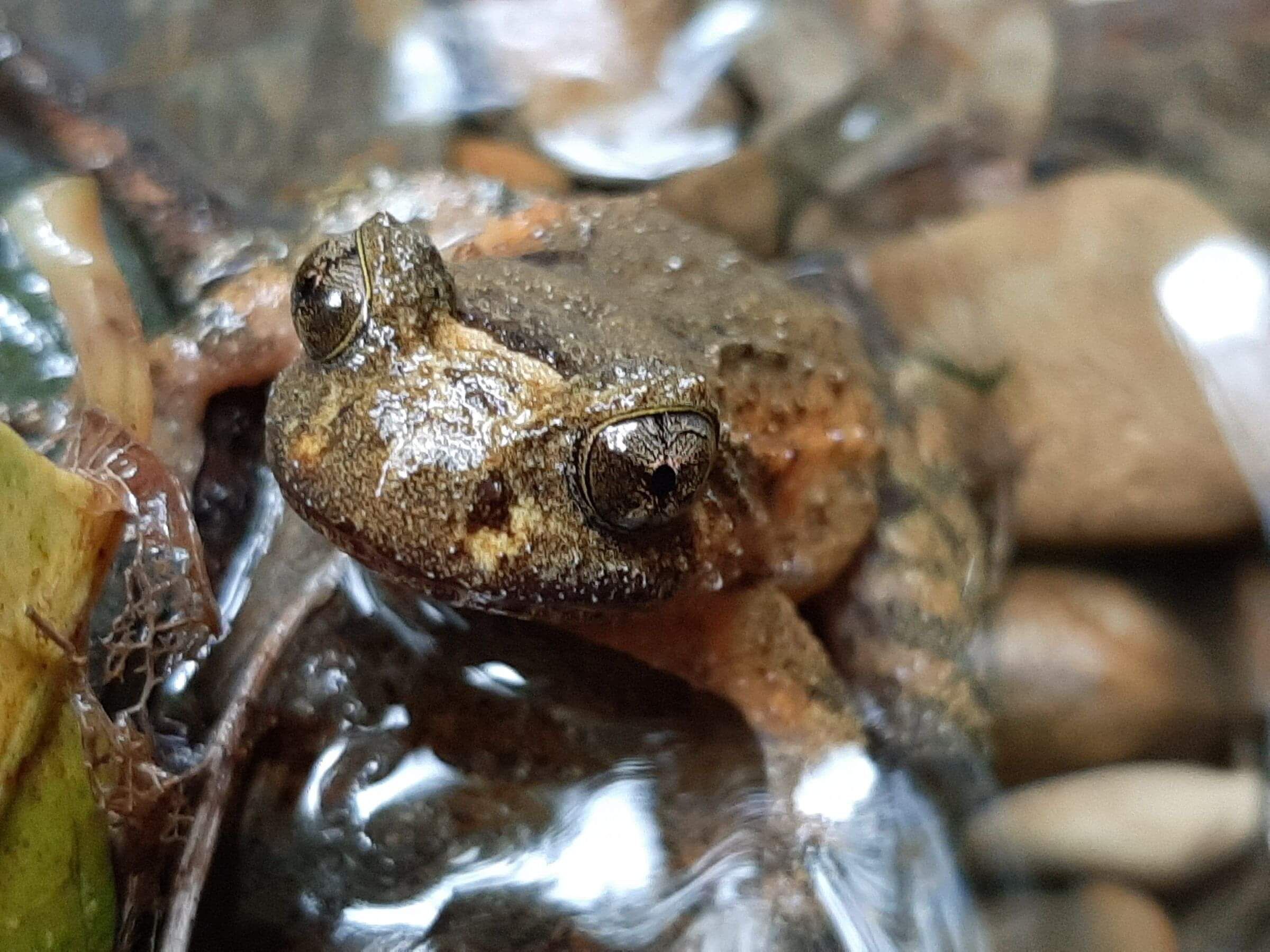

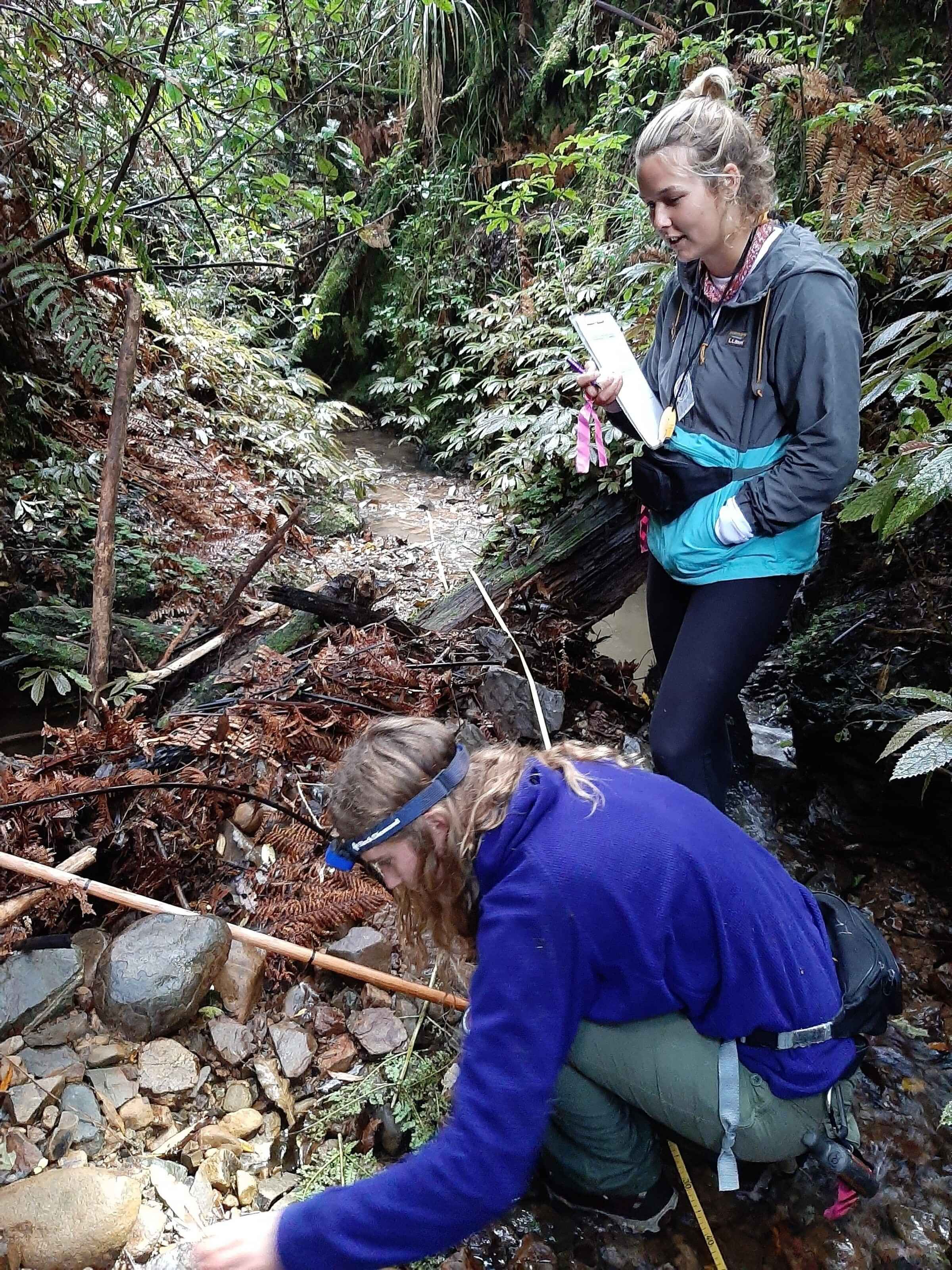
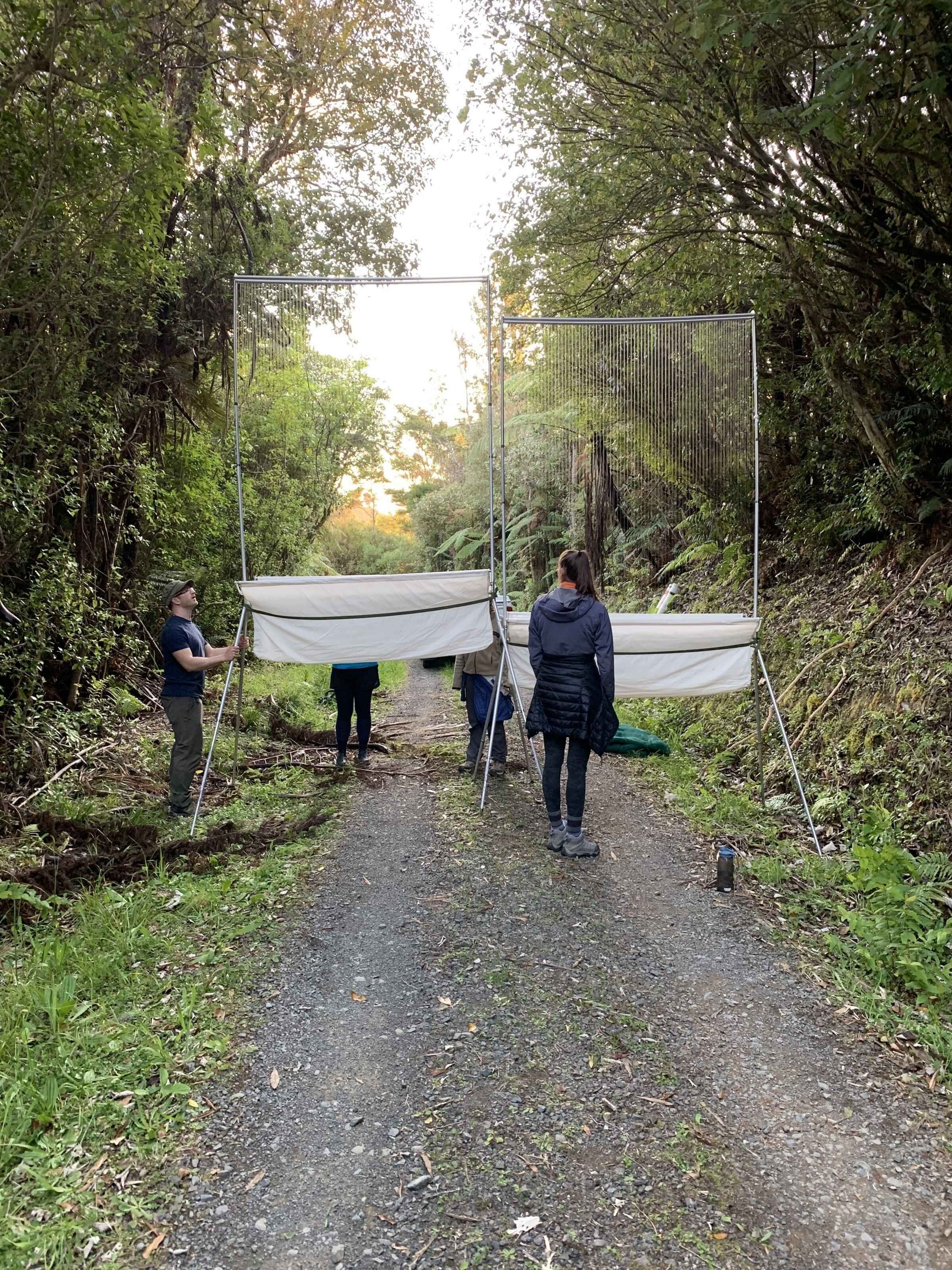
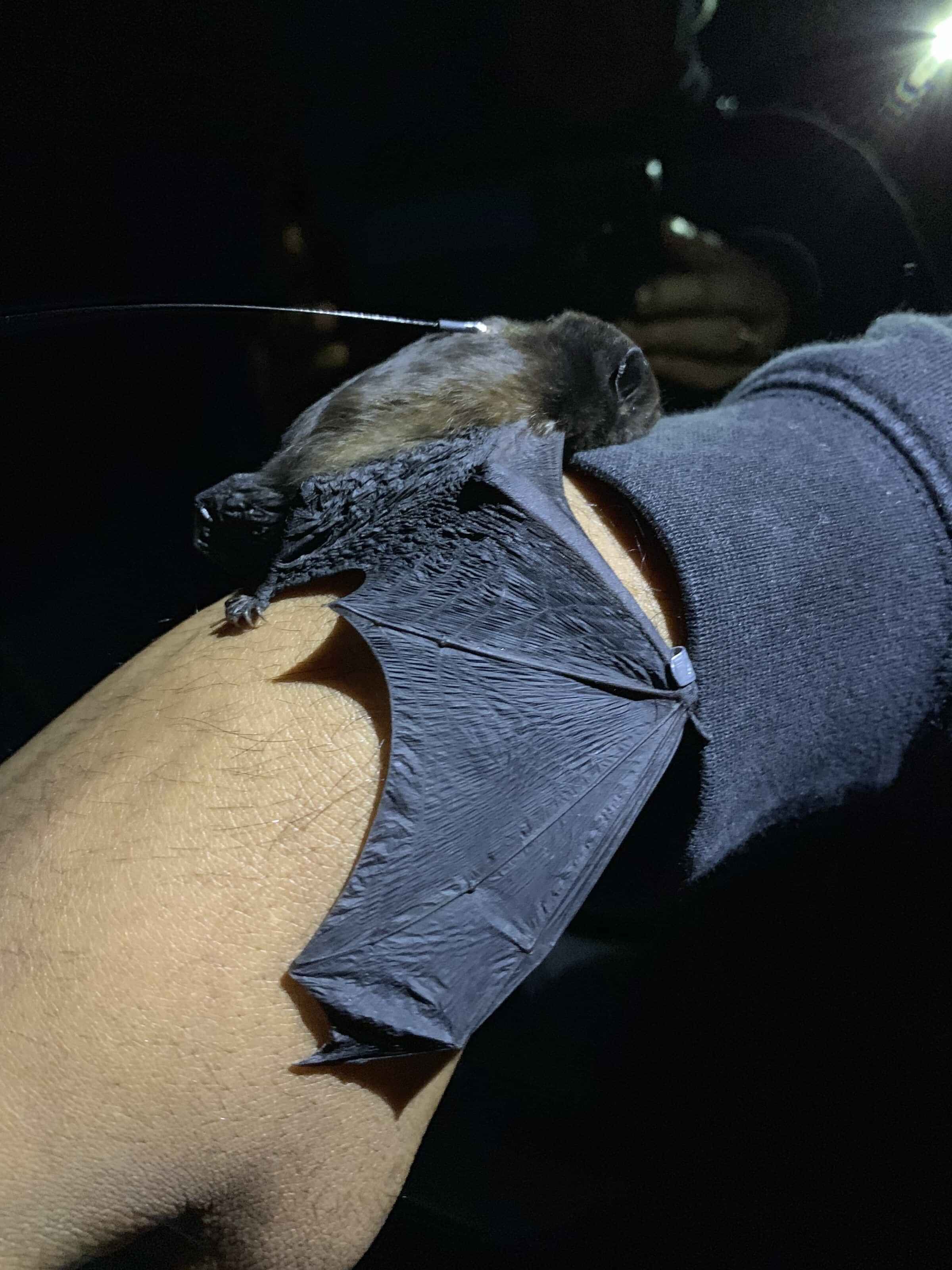

Acoustic monitoring of long-tailed bats and locating roosts in the Hūnua Ranges Regional Park, Auckland.
New Zealand’s native bats are cryptic and elusive creatures. Unfortunately, they have suffered major population declines in recent decades due to habitat loss and the widespread presence of invasive mammalian predators. A population of long-tailed bats (Chalinolobus tuberculatus) live in the Hūnua Ranges Regional Park located close to EcoQuest and since 2017 we have been undertaking field studies monitoring the presence and activity of these bats using acoustic equipment. This important monitoring work has also led to the establishment of an annual bat tracking program. Through this research, bats are captured using specialized harp traps. They are subsequently fitted with identification bands and specimens of a sufficient weight are fitted with radio-transmitters. Using radio-telemetry equipment, this enables us to track the bats to their roost sites, the location of which changes on an almost nightly basis. Understanding bat activity and locating roosts will be crucial for estimating the population size of these native mammals in the region, with a view to improving their level of protection through targeted management strategies.
The response of giant carnivorous kauri snail populations to forest restoration projects at Waipoua, Northland.
Of New Zealand’s diverse endemic land snail fauna, the largest species is the kauri snail, pūpūrangi, (Paryphanta busbyi). The kauri snail, once widespread across Northland, is now restricted to the remaining forest fragments which provide fertile soil and an abundance of earthworms required by the snails. The Waipoua Forest Trust in Northland is kaitiaki for a forest block in part regenerating forest, and in part older-growth forest. Since 2017 EcoQuest has conducted kauri snail abundance surveys to get a better understanding of their numbers and distribution and to document their response to forest maturation. In its field studies, EcoQuest counts the number of snails observed at night along permanent transects. These snail counts allow us to compare snail activity between the older growth and more recently planted forests so that we can document seasonal differences and recognise changes in abundance over time. We measure and mark all snails, to include recapture data of this long-lived species.
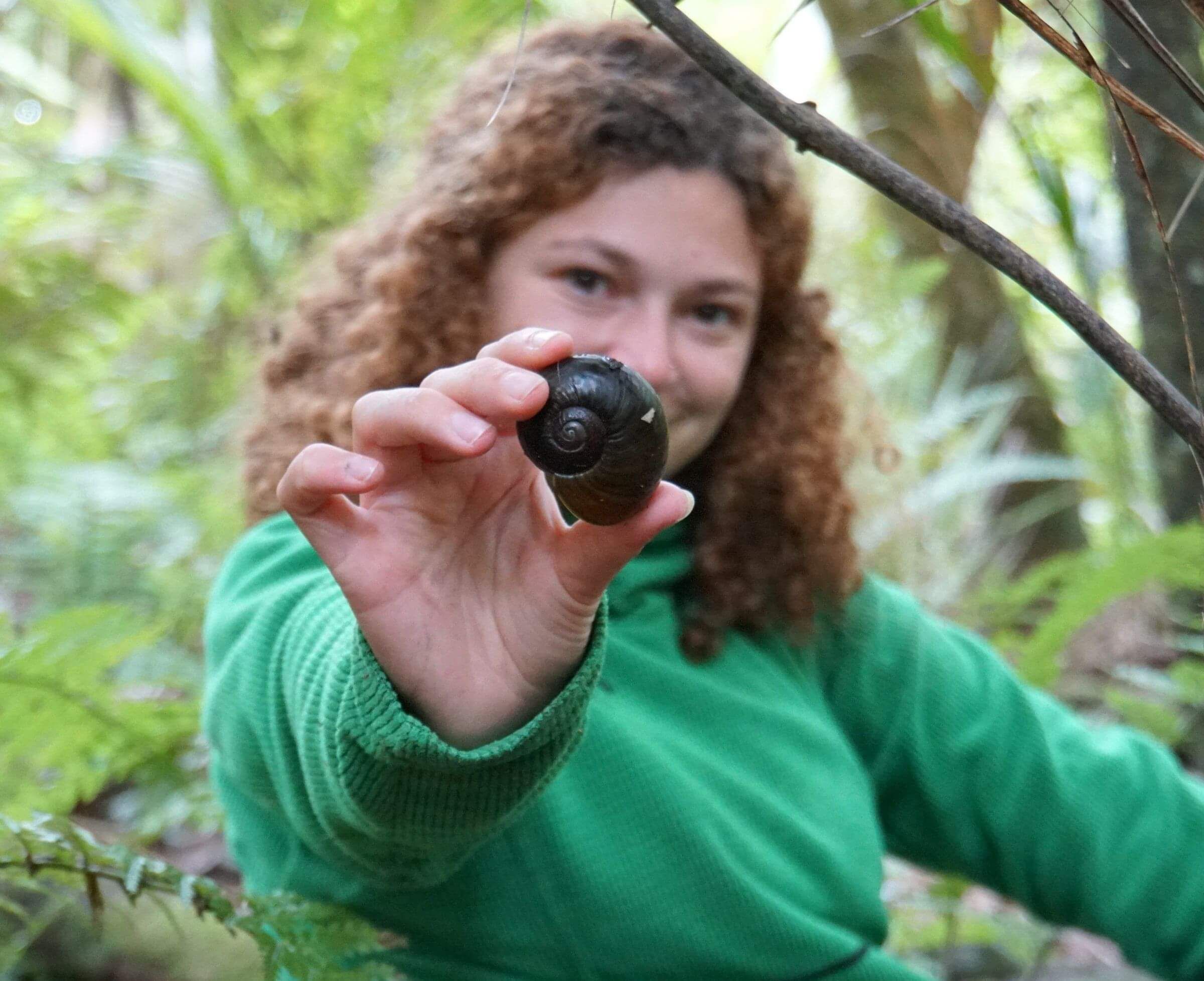
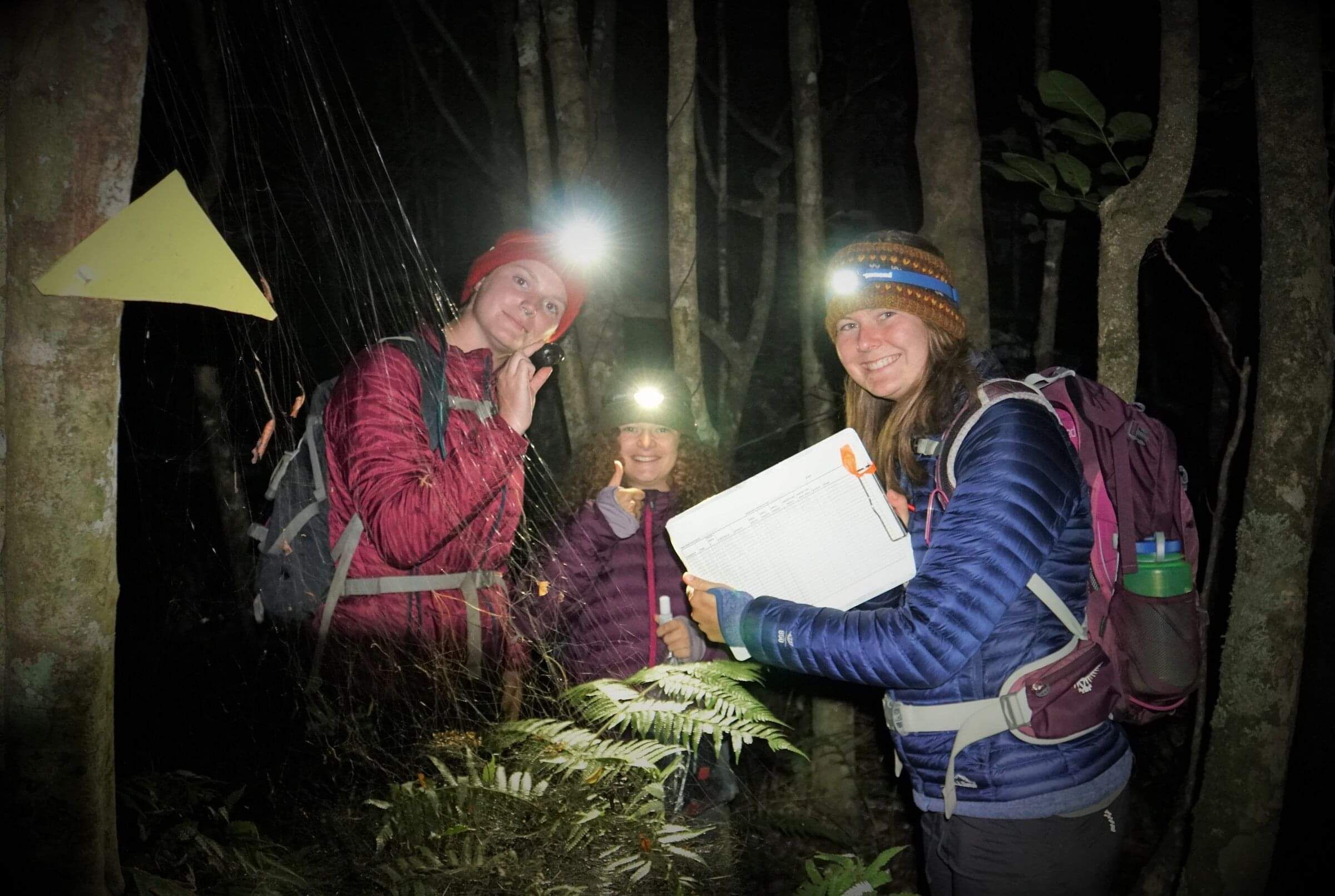
Fresh Water
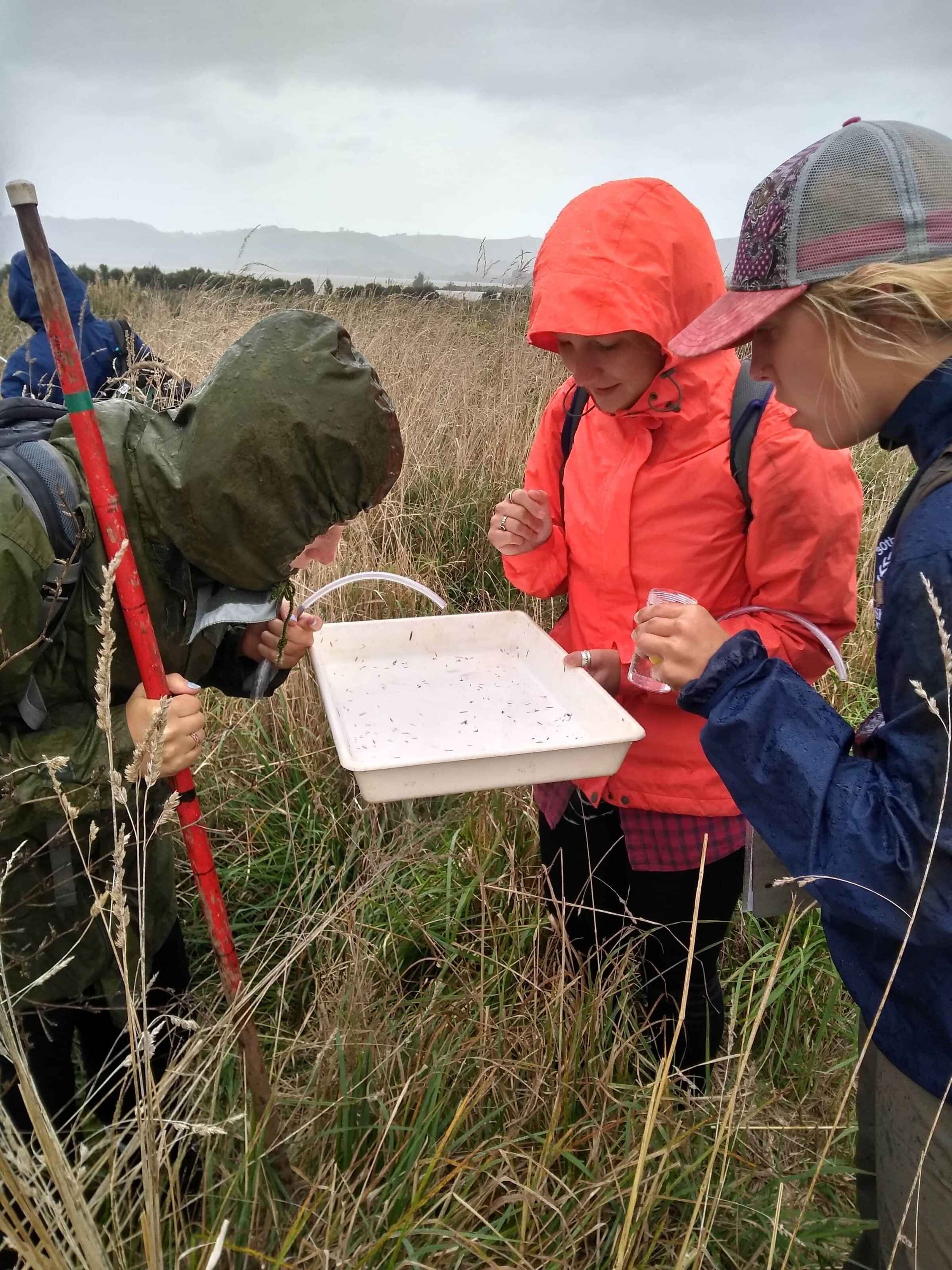
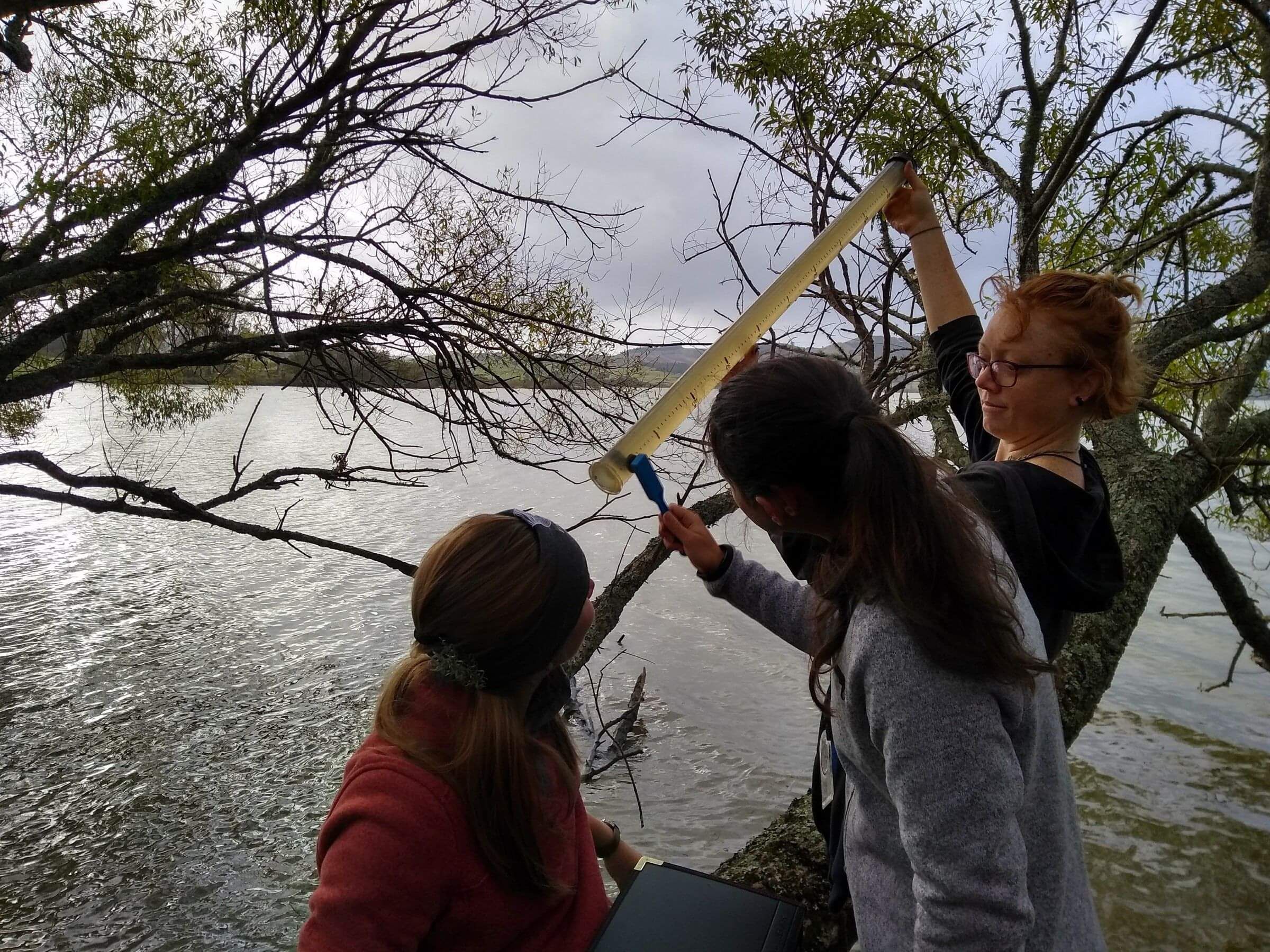
An assessment of invertebrate diversity and relative abundance at a restoration site adjacent to Lake Waikare, Waikato (component of a water quality management project).
Lake Waikare, located in the heart of the Waikato, has suffered tremendous degradation in recent years as a direct consequence of agricultural intensification. Freshwater mussels (Echyridella menziesii), also known locally by their Māori name kāeo, have all but disappeared in recent years due to excessive levels of nutrients and sediment entering the lake. Recent laboratory trials have demonstrated that antimicrobial compounds produced by myrtaceaeous plants, particularly mānuka (Leptospermum scoparium), may inhibit the conversion of ammonia into nitrate and nitrous oxide, while also encouraging the die-off of pathogenic organisms. In light of this breakthrough, a collaboration between the Nikau Whanau Trust, Matahuru Marae, Waikato Regional Council, the Institute of Environmental Science and Research (ESR) and EcoQuest, has resulted in the creation of a mānuka dominated experimental restoration site on former farmland beside Lake Waikare. Prior to restoration planting in June 2017, EcoQuest initiated and completed baseline ecological sampling of soil invertebrates. As soil invertebrates are also sensitive to the same pollutants that degrade water quality, they can serve as a useful indicator for soil health. Since the initial baseline survey, EcoQuest have carried out invertebrate surveys using a range of methods at the research site annually, as well as at a number of reference sites adjacent to the lake that were already in different stages of native riparian growth. This is a long-term field studies project that will provide a crucial insight into the recruitment of invertebrate assemblages as restoration sites develop, bettering our understanding of their role in the function and health of these ecosystems over time.
Fish community assessment following fish-passage enhancement of culverts in the Southern Hūnua Ranges.
Worldwide freshwater fish species are in decline, New Zealand is no exception to these trends with 68% of native freshwater fish listed as threatened. New Zealand native freshwater fish are an important part of our evolutionary history, cultural heritage, and ecosystem function, yet many go unnoticed because they are small, cryptic and many are nocturnal. A high proportion of our native freshwater fish are diadromous (migrate between salt and fresh waters). Human activity, such as the building of roads and dams, impacts the migration activity of our native fish. Changes in the landscape disrupts riverscape connectivity, preventing passage of migrating fish.
In 2016 in the Wairoa, Mangatawhiri and Mangatangi catchments, Southern Hūnua Ranges, Auckland Council installed structures in 18 road culverts to aid the passage of migrating fish. Prior to these installations EcoQuest conducted a survey documenting the diversity and relative abundance of freshwater fish above and below road culvert barriers. We continue the fish surveys on a five-yearly cycle in order to establish the effectiveness of the fish passage devices. Assistance from Auckland Council (RENH grant and professional advice) has enabled EcoQuest to carry out multiple fish surveys.
This field studies project aims to enhance management of, and conservation options for native fresh water fish, and help all stakeholders and collaborators (Auckland Council, mana whenua, land managers and landowners) to develop and implement proactive strategies for (especially migratory) freshwater fish in the face of climate change and rapidly changing environmental conditions.
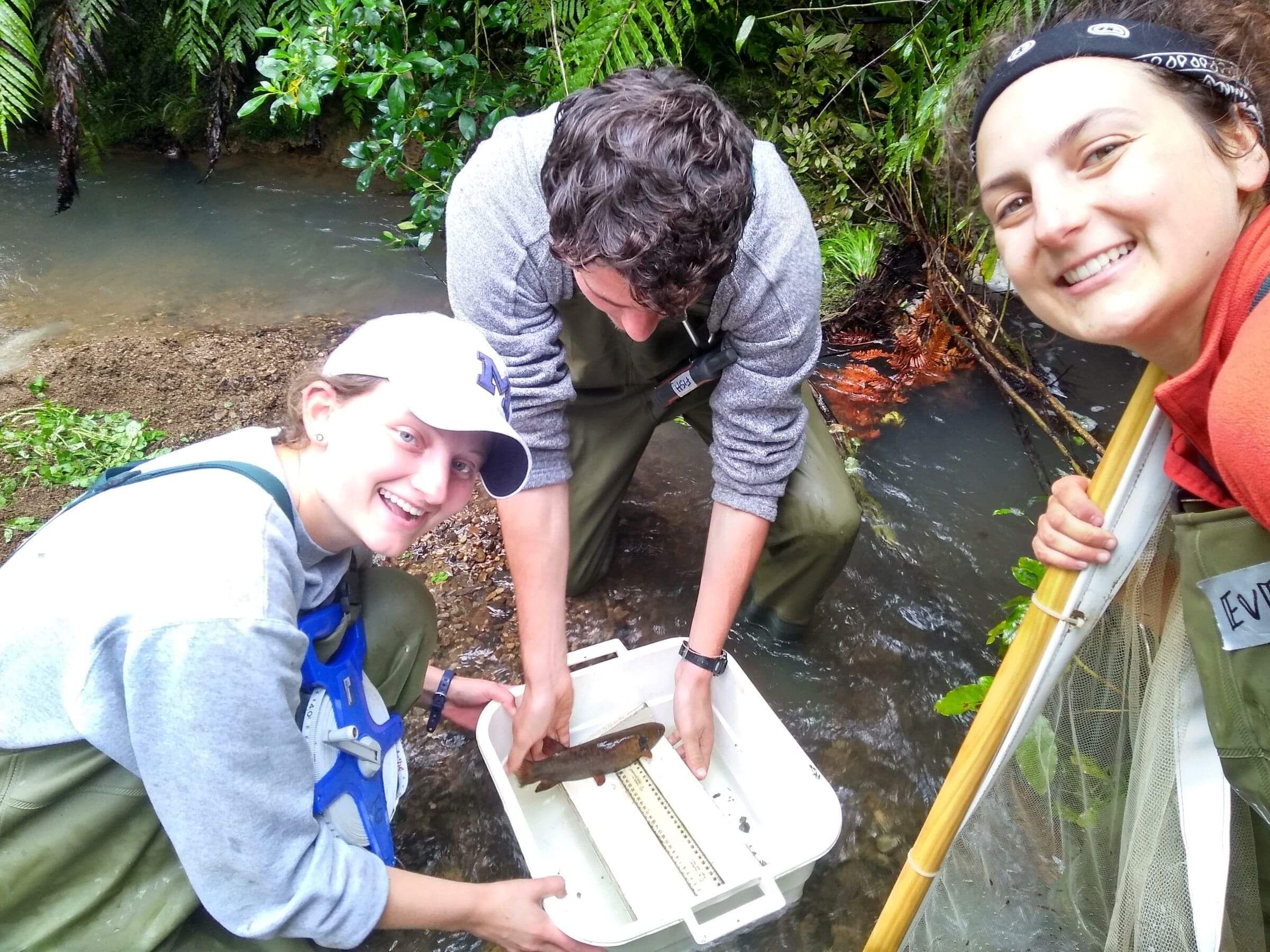
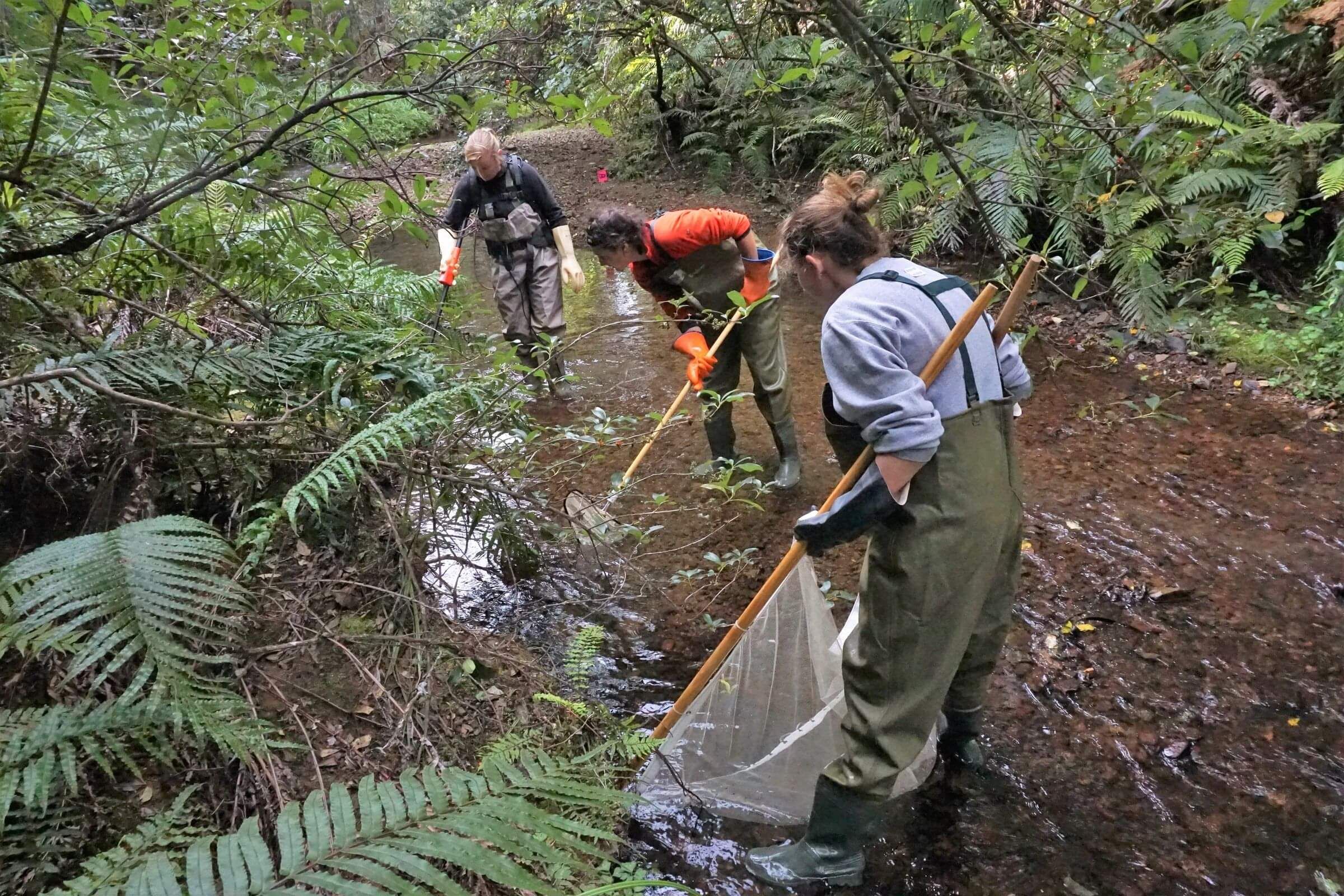
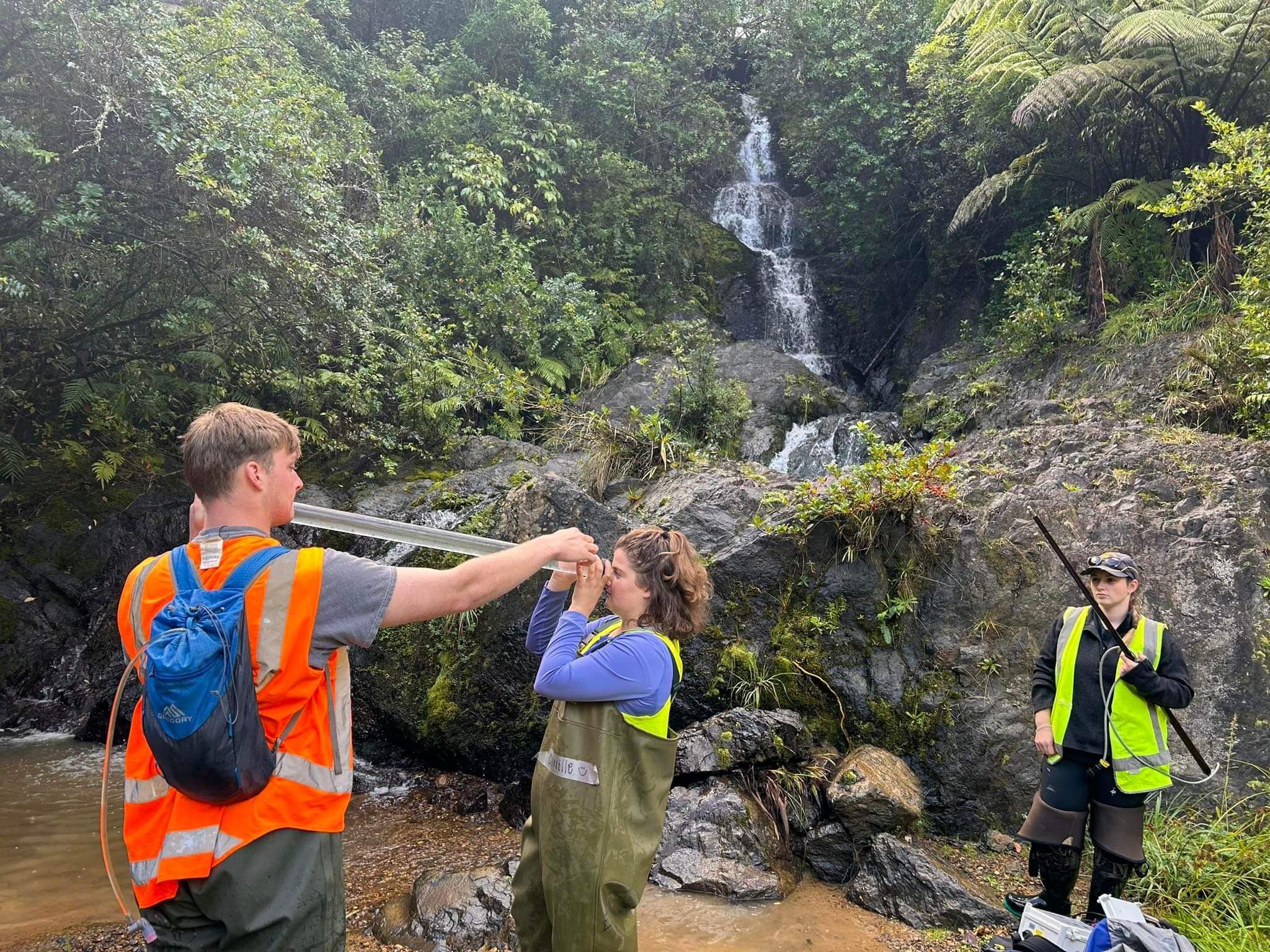
Coastal & Islands
Long-term dynamics of the Pūkorokoro wetland in response to climate change
Coastal wetlands are ground zero for the effects of climate change. They exist in a narrow band of physical and ecological factors that can be radically altered by small changes in sea level, precipitation, temperature, or storm frequency. The Pūkorokoro wetland, located near EcoQuest’s field centre on the Kaiaua coast, is one of the only active chenier plain systems in the world. It also one of the last remnants of the extensive and ecologically significant coastal wetlands that once surrounded much of the Firth of Thames. In January 2018 a major coastal inunudation (driven by a combined spring tide, storm surge, and strong onshore winds) inundated this wetland and much of the surrounding Kaiaua coast with seawater. Events such as these are predicted to become more common over the next century, and the response of the wetland ecosystem to this single event can help us understand how it will response to the pressures of climate change in the future.
In April 2018, EcoQuest established permanent transects in the wetland and carried out ecological and hydrographic surveys that record the state of the wetland in the aftermath of the inundation. These surveys were repeated in 2019, and together they form a dataset that both shows the process of recovery from a single inundation event, and forms a baseline for future surveys.


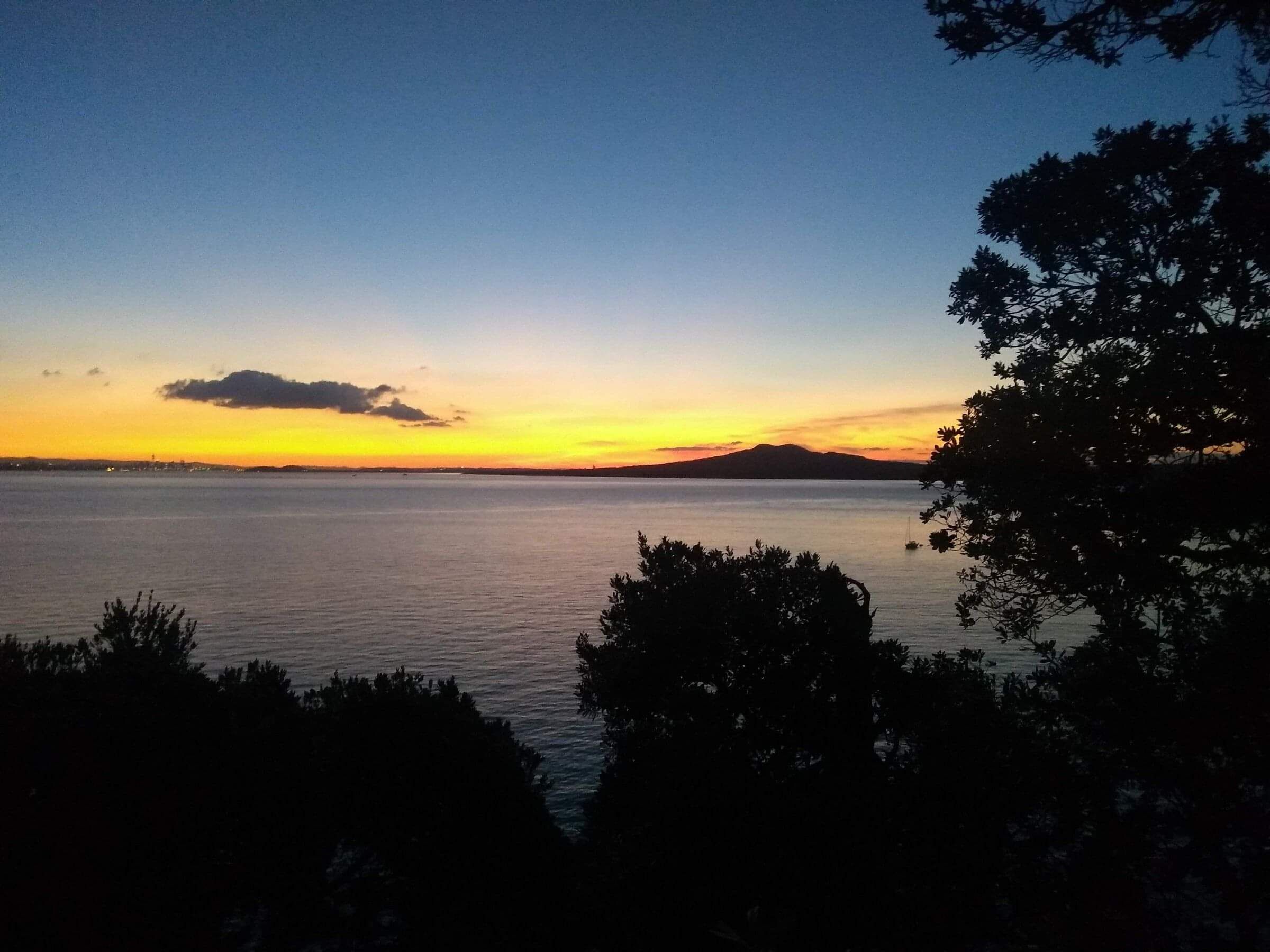
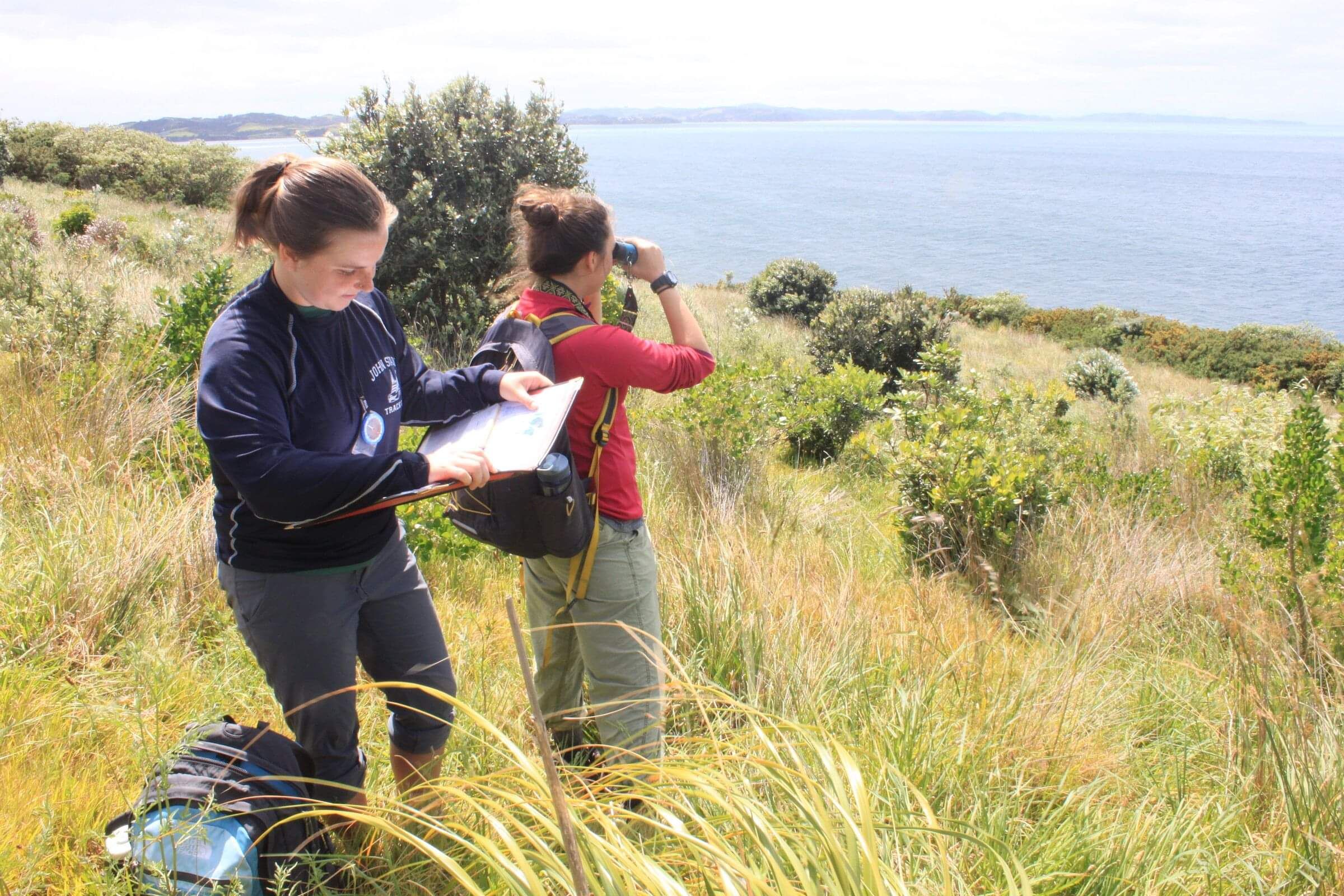
Vegetation composition and Relative abundance of native birds on Motuihe
Motuihe is one of a growing number of islands in the Hauraki Gulf that are free of mammalian predators. Vegetation surveys are carried out on a 5-year cycle. Bird surveys every two or three years. We use seven native bird species as bioindicators of changes resulting from eradication of mammalian pests and habitat restoration through planting and natural regeneration of vegetation. This work is a part of a longitudinal monitoring study that began in 2005. There are only a few small pockets of old growth forest left on the island, and bird species which rely on these habitats are largely absent. The regeneration of native vegetation is characterised by relatively rapid growth of pioneer species. Bird species respond to the changes in vegetation structure, as well the changes in abundance of (seasonal) food.
Biodiversity on Private Land
The Warrenheip Native Forest: ecological research in a forest free from mammalian pests
The Warrenheip Native Forest is a 16-hectare gully and adjacent flat area of regenerating forest that nurtures native fauna through the exclusion of mammalian pests with the surrounding Xcluder™ Pest Proof fence. The Warrenheip Native Forest was fostered by former teacher Juliette Wallace and farmer David Wallace in their own substantial backyard. The Warrenheip Native Forest is an ecological success that exemplifies the commitment involved in keeping an area free of mammalian pests. EcoQuest has been working alongside Juliette and David contributing to the Warrenheip Forest Project since 1999. EcoQuest’s research at the Warrenheip Native Forest focuses on ecosystem response to mammalian pest eradication. The four major projects EcoQuest has conducted at Warrenheip are: Monitoring wētā as indicator species; measuring native flora growth, regeneration, and dispersal; measuring the growth of native trees planted for sustainable timber; and comparing water quality of the Mangahanene stream across reaches inside and outside the Warrenheip Native Forest.

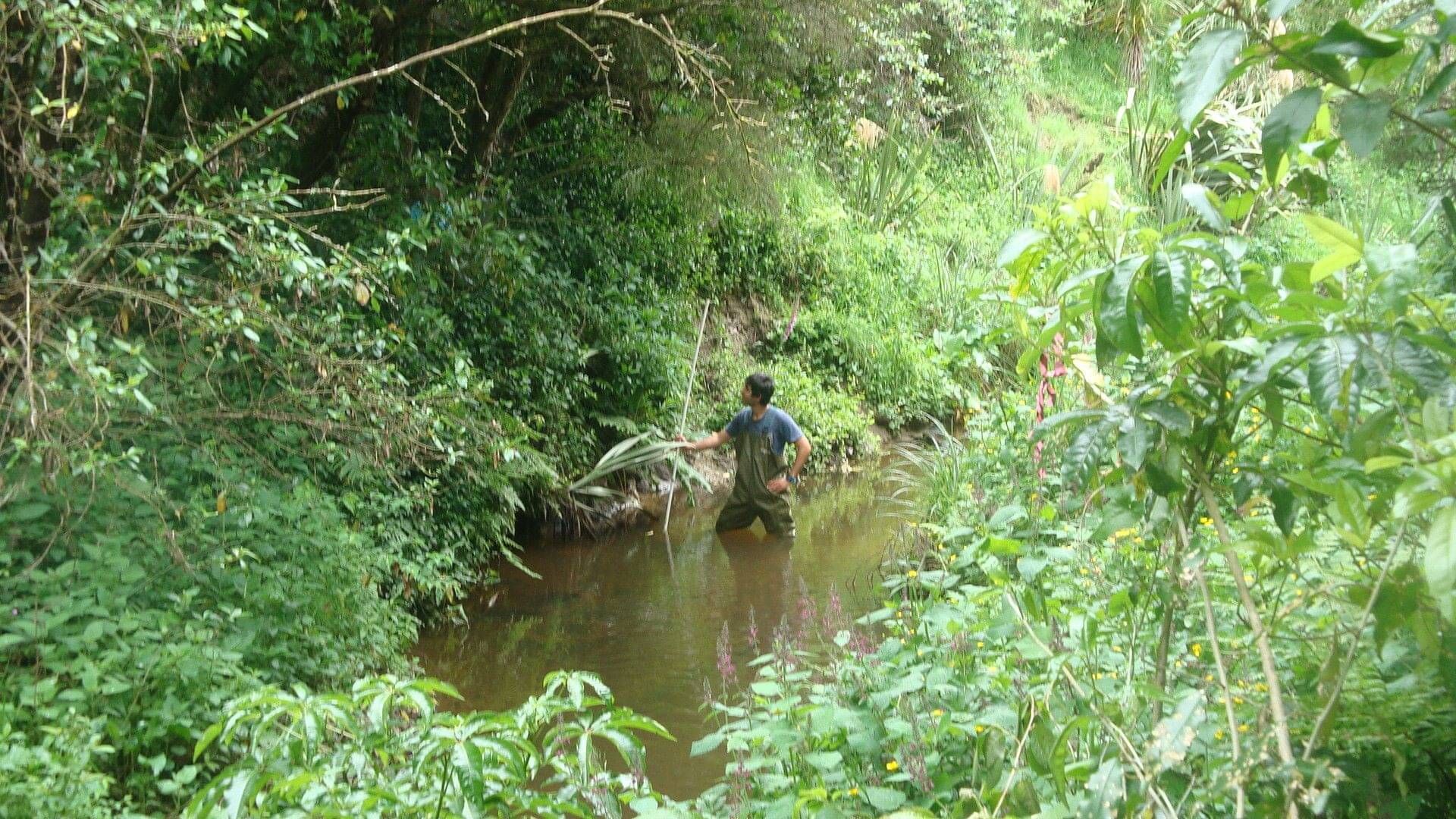
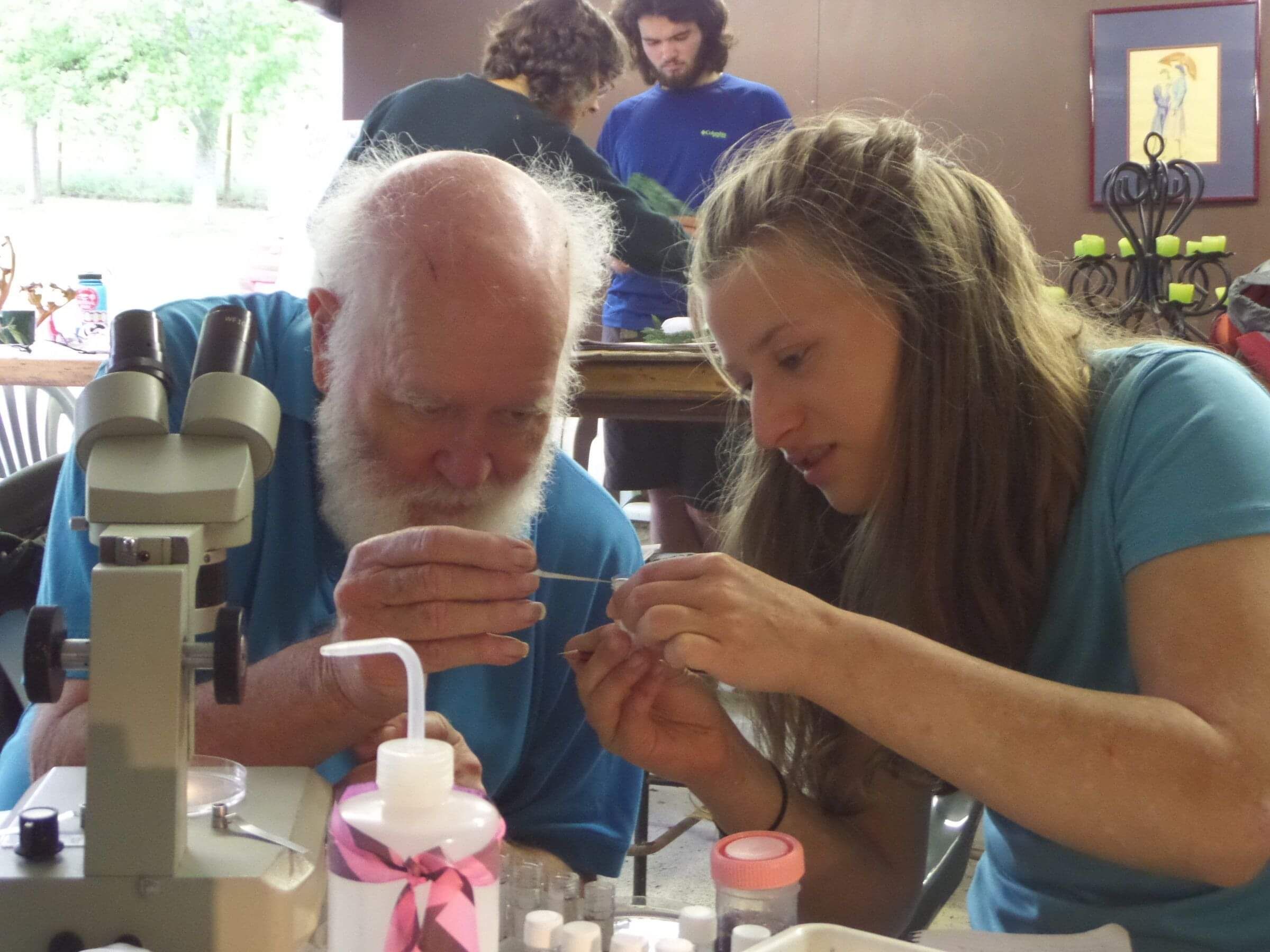
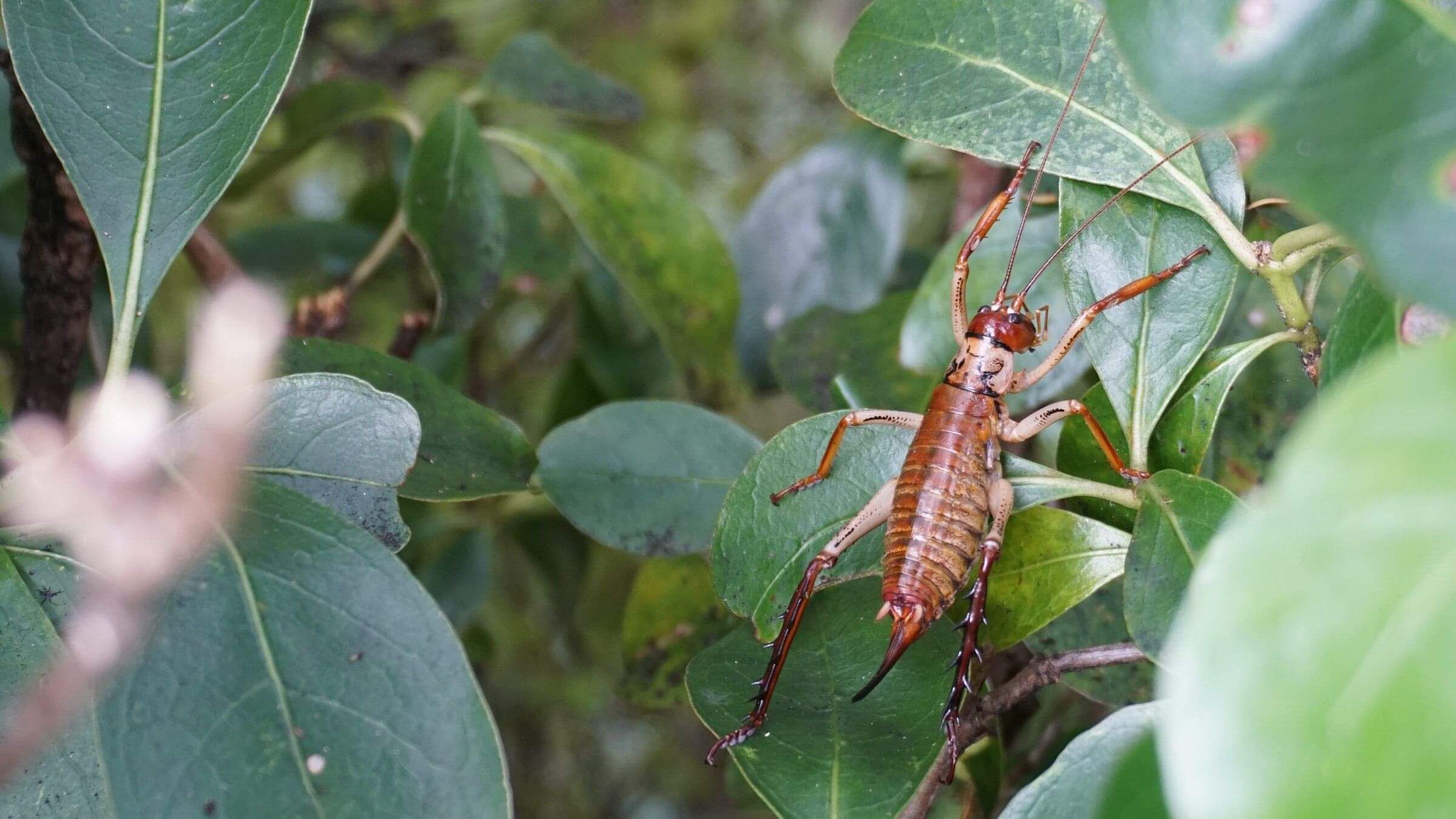
Monitoring wētā species population change following predator eradication at Warrenheip Native Forest, Waikato
Four types of wētā have greatly benefitted from the Warrenheip forest project. Cave, tree and ground wētā had a small population presence in the Warrenheip Native Forest when the Xcluder™ Pest Proof fence was first installed. The endangered Mahoenui giant wētā was translocated to the Warrenheip Native Forest in 2001. Periodically since 2001, EcoQuest has conducted rapid biodiversity assessment of the four wētā types both within and outside the Warrenheip Native Forest. Since pest eradication the abundance of cave, tree and ground wētā has steadily grown both inside and outside the reserve. Although abundance and population increase is greater within the fenced forest for all wētā types. The Mahoenui giant wētā have flourished within the Warrenheip Native Forest to the extent that they now escape the fenced area.

